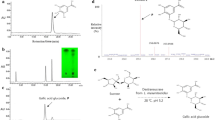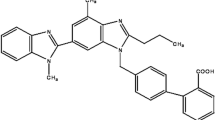Summary
Gradient elution RP-HPLC has been applied to the separation of the constituents of synthetic tanning agents. Information obtained from the chromatographic results was used to assess the possibility of optimizing the conditions of synthesis, to find out the number of species formed and to make a start at correlating the composition of the tanning agents and their properties.
Similar content being viewed by others
References
N. A. Evans, K. C. Montgemery, Proceedings of XIX International Congress I. U. L. U. C. S., Melbourne, Australia (1987) pp. 292–301.
S. A. Lipowsky, U. Sertest Office, Patenten Jan. 21, 1969.
H. Wachsmann J. And. Indther Chem. Ass.,81, 103 (1986).
Author information
Authors and Affiliations
Rights and permissions
About this article
Cite this article
Baiocchi, C., Saini, G., Bertolo, P.L. et al. Synthetic tanning agents. Characterization, control of synthesis and assessment of correlations between product composition and taning properties by reversed-phase high performance liquid chromatography. Chromatographia 28, 391–399 (1989). https://doi.org/10.1007/BF02261021
Received:
Accepted:
Issue Date:
DOI: https://doi.org/10.1007/BF02261021




